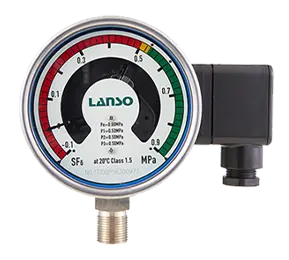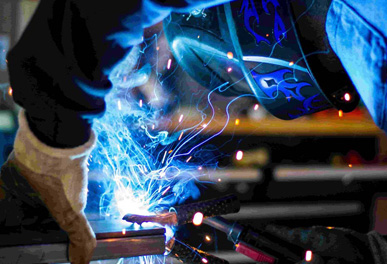To ensure the relevant performance of electrical equipment meets the design requirements and has room for tolerance, the working pressure of SF6 gas in electrical equipment should be maintained within a certain range. When the pressure is too high, the pressurized sealing of the gas chamber may become deformed due to overvoltage, resulting in leakage. When the pressure is too low, it can cause a decrease in the insulation and arc extinguishing performance of the equipment, and in serious cases, insulation accidents may occur. To ensure the safe and reliable operation of the equipment, monitoring of the SF6 gas pressure should be strengthened. Based on on-site experience, improper design, installation, use, or maintenance of the SF6 gas monitoring device (mainly the SF6 relay) can also cause serious consequences such as SF6 gas leakage and malfunction or misoperation of protection devices.
The oil-filled SF6 relay gauge is leaking oil
To improve the earthquake resistance of the SF6 relay, silicon oil is used to absorb vibrations and prevent the spread of vibrations. Silicon oil is filled in some types of density relays. If the internal silicon oil leaks or is missing, the damping effect of the silicon oil will decrease or disappear, affecting the seismic performance of the density relay. At the same time, the contact point of the density relay is exposed to the air, which can cause the contact to become damp and oxidized, resulting in measurement deviation and operational errors, affecting the monitoring performance.
Calibration data of SF6 relay is unacceptable
According to regulations, the "indication" and "contact switching error" tests should be carried out regularly for the SF6 relay. During on-site inspection, problems such as large pressure indication deviation of the density relay pointer, unconnected contact points or high contact resistance, and excessive errors in contact action values are often found. When the gas chamber is leaking, the pressure of the chamber cannot be monitored normally during operation. Malfunction or misoperation of protection devices may occur due to inaccurate contact pressure values, which can cause insulation accidents.
The ternary valve connection of SF6 relay is in the closed state
Currently, the ternary valve interface of the commonly used SF6 relay in the power industry can be divided into two structures according to whether the gas filling valve and the density relay calibration valve are independent: separated and integrated. One structure is the ABB-type separated structure. When calibrating the SF6 relay, the calibration device interface and the calibration interface reserved on the valve body can be screwed tightly to complete the calibration (the shut-off valve inside the ternary valve is activated to isolate the density gauge from the gas chamber body), enabling the calibration of the SF6 relay. The other is the integrated structure. When calibrating the SF6 relay, the open and close devices (shut-off valves) on the valve body need to be rotated to the closed state, and then the calibration device interface can be screwed tightly to complete the calibration. It is necessary to ensure that the shut-off valve is in the open state during operation; otherwise, the indication of the density relay will be the residual pressure of the gas, and there is a hidden danger to the normal monitoring of equipment operation pressure.
The alarm and locking signals of SF6 relay are not correctly connected to the monitoring system
According to the design specifications, the alarm and locking contacts of the SF6 relay should be connected to the monitoring system and central control system. When the SF6 chamber leaks, and the pressure drops, it should issue a "low pressure" warning signal in time, lock the tripping control circuit of the circuit breaker (when the pressure in the circuit breaker gas chamber drops to the critical value), and remind the staff to take relevant measures. During the power outage and maintenance of SF6 electrical equipment, when the alarm and locking contact signals of the density relay are subjected to protection drive tests as required, problems such as the alarm signal of the density relay not being correctly connected to the monitoring system, the position information of the chamber connection system's alarm not matching the actual situation, and the locking loop contacts being unconnected may occur. When SF6 electrical equipment is leaking and has the above problems, it cannot accurately locate the gas chamber and take timely emergency measures, which may cause serious consequences and escalate the incident.







